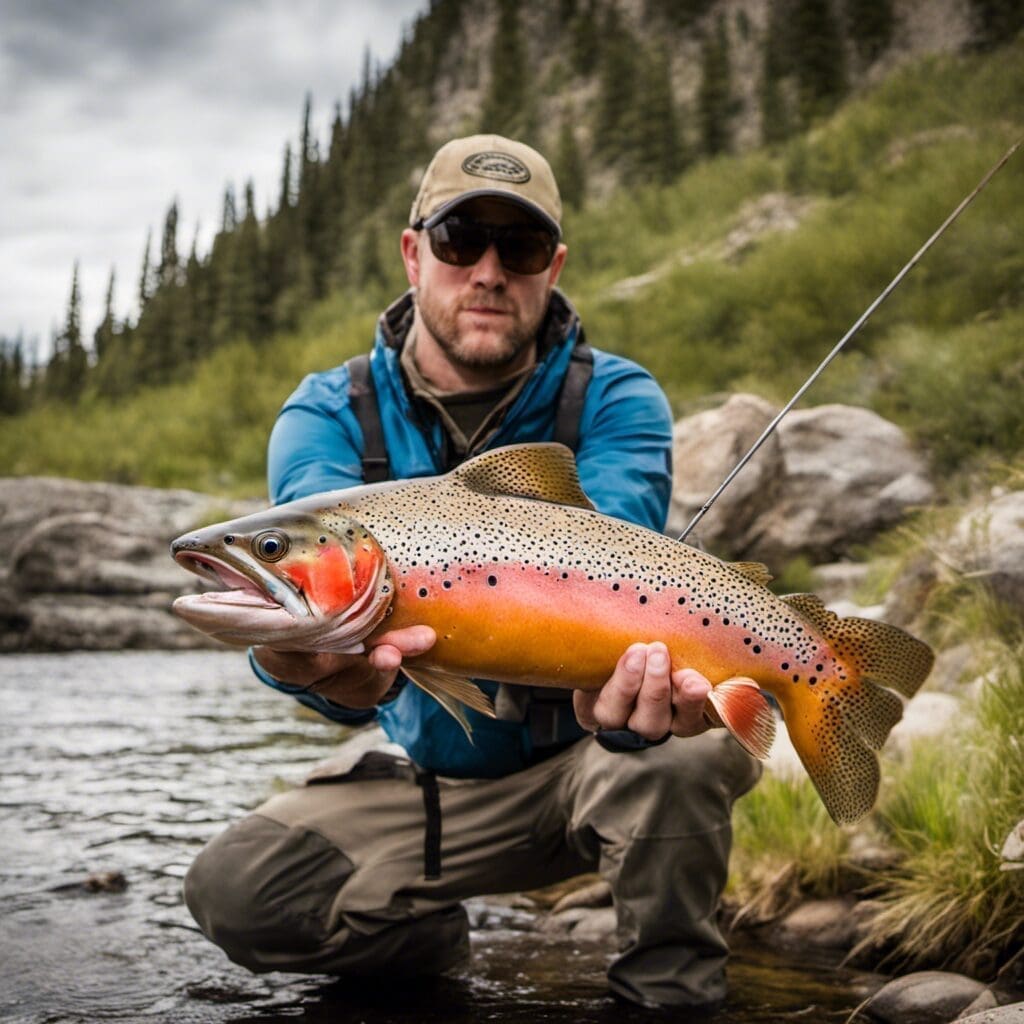Introduction
The Cutthroat Trout, scientifically known as Oncorhynchus clarkii, belongs to the Salmonidae family.
Conservation Status
The International Union for Conservation of Nature (IUCN) currently lists the Cutthroat Trout as a species of “Least Concern” due to their wide distribution. However, certain local populations are under threat and have been classified in varying levels of risk.
Conservation efforts are in place to protect these populations, including habitat restoration and repopulation programs.
Statistics
| Length | Weight | Average Lifespan |
|---|---|---|
| Average: 20 in.; Range: 6-40 in. | Average: 1.5 lbs; Range: 0.25-20 lbs | 8-12 years |
Distribution
Cutthroat Trout are native to the cold-water tributaries of the Pacific Ocean, Rocky Mountains, and Great Basin in North America. They show limited migration patterns, mostly moving upstream to spawn in the spring.
Habitats
The Cutthroat Trout thrives in cold, clear, well-oxygenated streams and lakes.
– Water type: Freshwater and Saltwater
- Depth range: Near the surface to about 200 feet
– Temperature range: Prefers 55 – 64 °F
When and Where to See
Cutthroat Trout are most active during early morning and late evening in the summer months. In the winter, they are most active during the warmer parts of the day.
Best Fishing Locations
– South Fork of the Snake River, Idaho
– Yellowstone River, Montana
– Green River, Utah
– Rio Grande, Colorado
– Spokane River, Washington
- American River, California
– Flathead River, Montana
– Firehole River, Wyoming
How to Catch
Common techniques for catching Cutthroat Trout include fly fishing and trolling. They respond well to dry flies, nymphs, and streamers. Best time to fish is early morning or late evening, especially during the spawning season in spring.
Identification Guide
A distinct characteristic of the Cutthroat Trout is the red or orange slash on the underside of the lower jaw. It also has small, non-ocellated spots distributed across its body.
Culinary
Cutthroat Trout are known for their delicate, nutty flavor. They make for excellent table fare when smoked, grilled, or baked.
– Taste Profile: Delicate, Nutty
– Nutrition: Low in fat and high in protein
Additional Information
Cutthroat Trout are opportunistic feeders with a diet mainly consisting of insects and small fish. The primary threats to the Cutthroat Trout are habitat loss, over-fishing, and introduction of non-native species.
References and Further Reading
– Trout Unlimited – Cutthroat Trout(www.tu.org)
– International Game Fish Association – Cutthroat Trout (www.igfa.org)

